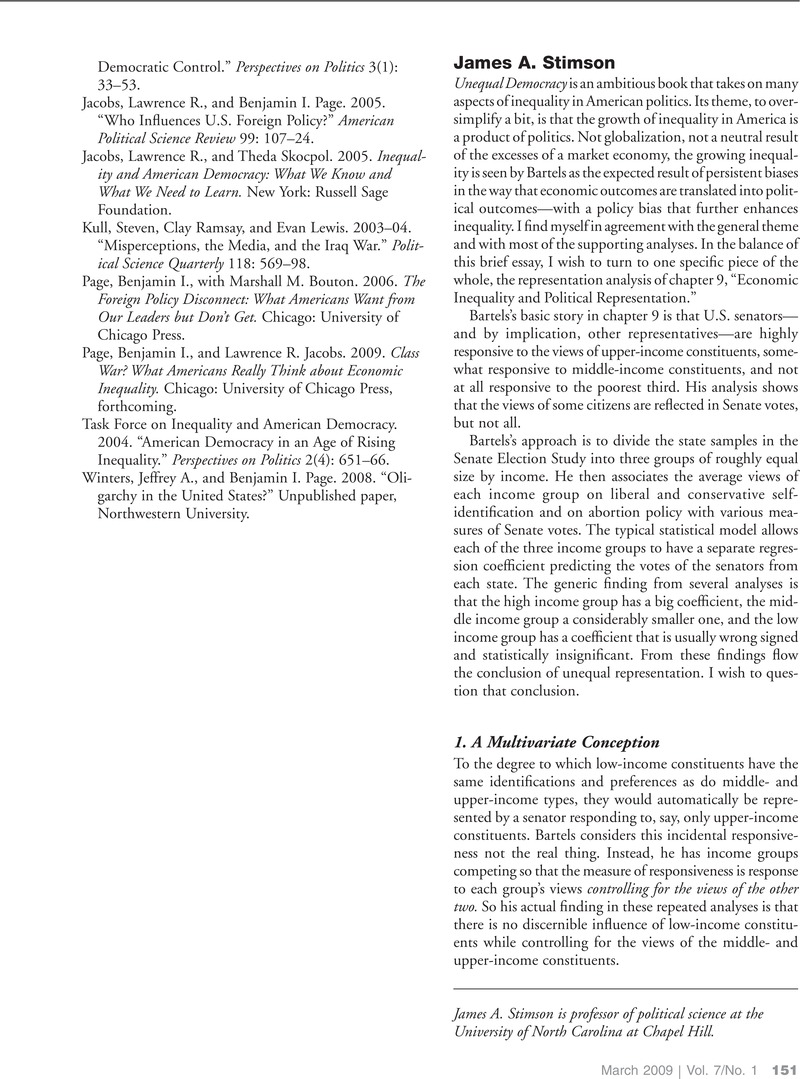Crossref Citations
This article has been cited by the following publications. This list is generated based on data provided by Crossref.
Kelly, Nathan J.
and
Enns, Peter K.
2010.
Inequality and the Dynamics of Public Opinion: The Self‐Reinforcing Link Between Economic Inequality and Mass Preferences.
American Journal of Political Science,
Vol. 54,
Issue. 4,
p.
855.
Disch, Lisa
2012.
Democratic Representation and the Constituency Paradox.
Perspectives on Politics,
Vol. 10,
Issue. 3,
p.
599.
CAUGHEY, DEVIN
and
WARSHAW, CHRISTOPHER
2018.
Policy Preferences and Policy Change: Dynamic Responsiveness in the American States, 1936–2014.
American Political Science Review,
Vol. 112,
Issue. 2,
p.
249.
Huang, Cong
2023.
Policy specific moods disconnect income inequality and government redistribution.
The Social Science Journal,
Vol. 60,
Issue. 3,
p.
522.





